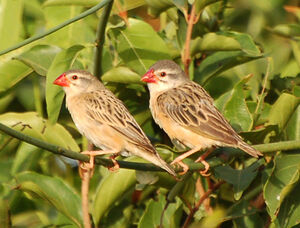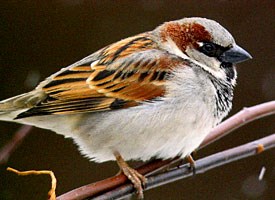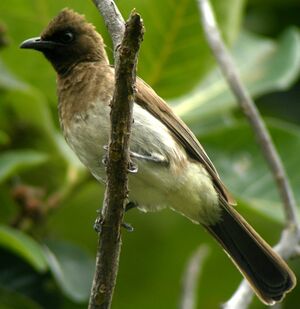WHY TANZANIA IS CONSIDERED
AS THE ONE OF MEGADIVERSE COUNTRY IN THE WORLD
Tanzania, encompassing the Mainland and
Zanzibar Islands, is the largest country in East Africa ,It is located on the east
coast of Africa between latitudes 10S and 12°S And longitudes 30°E and 40°E. It
extends from Lake Tanganyika In the West to the Indian Ocean in the east; Lake Victoria
in the North, to Lake Nyasa and river Ruvuma in the South. The country borders with
Kenya and Uganda in the North, Rwanda, Burundi in the North west, Republic of Congo
(Zaire) in the West, Zambia to the South- west, and Malawi as well as Mozambique
in the South. The total area of Tanzania is 945,000 km2 of which The Zanzibar Islands
Cover 2,400 km 2. Inland waters cover an area of 61,500 km 2, 88% of
which is covered with Lakes Victoria, Tanganyika and Nyasa.
Tanzania is among the Mega diversity countries in the World although there are some claims that Tanzania may not be one of them.
To be honest let me remind you that, Tanzania contains some 20 percent of the species of African's large mammals population, found across its reserves, conservation areas, marine parks, and 16
national parks, spread over an area of more than 42,000 square kilometres
(16,000 sq mi) and forming approximately 38 percent of the country's
territory
Some of Main groups of chordates found in Tanzania are explained bellow,
BIRDS
The
avifauna of Tanzania include a total of 1039 species, of which 23 are endemic,
four have been introduced by humans and 43 are
rare or accidental. Of these, 36 species are globally threatened.
Endemic species
are includes yellow-collared lovebird
(Agapornis personatus), Pemba green pigeon (Treron pembaensis), Pemba scops owl
(Otus pembaensis), Usambara eagle-owl (Bubo vosseleri), Beesley's lark
(Chersomanes beesleyi), Mrs. Moreau's warbler (Scepomycter winifredae), Usambara hyliota (Hyliota usambarae), Usambara akalat (Sheppardia montana),
Iringa akalat (Sheppardia lowei), Rubeho akalat
(Sheppardia aurantiithorax), banded sunbird
(Anthreptes rubritorques), Moreau's sunbird
(Nectarinia moreaui), rufous-winged sunbird, Tanzania seedeater (Serinus melanochrous), rufous-tailed weaver (Histurgops ruficauda), Kilombero weaver
(Ploceus burnieri), Tanganyika masked weaver
(Ploceus reichardi) and Usambara weaver
(Ploceus nicolli). Nearly 1,500 varieties of birds have been
reported with the course of time. The well
known introduced species are rock pigeon
(Columba livia) and Indian house crow
(Corvus splendens).
MAMMALS
More than three hundred
species of mammals have been reported in Tanzania. Some of the species reported
are: African bush elephant (Loxodonta africana), Burchell's zebra
(Equus burchellii), Thomson's gazelle (Eudorcas thomsonii), hartebeest
(Alcelaphus buselaphus), woodland dormouse
(Graphiurus murinus), kipunji
(Rungwecebus kipunji), Thomas's bushbaby (Galago thomasi), Prince Demidoff's bushbaby
(Galagoides demidovii), puku
(Kobus vardonii), gerenuk
(Litocranius walleri), common warthog
(Phacochoerus africanus), pygmy scaly-tailed flying squirrel
(Idiurus zenkeri), suni
(Neotragus moschatus), mbarapi
(Hippotragus niger) and North African crested porcupine
(Hystrix cristata).
Predators:
these includes are:Lion (Panthera leo), spotted hyena
(Crocuta crocuta), black-backed jackal (Canis mesomelas) and serval
(Leptailurus serval).
Some
of the primate species reported are: chimpanzee
(Pan troglodytes), and baboons
(Papio): anubis baboon (Papio anubis), yellow baboon
(Papio cynocephalus), and hamadryas baboon
(Papio hamadryas).
REPTILES AND AMPHIBIANS
Tanzania is internationally recognized as a key country for the conservation of African biological diversity. Its herpeto-fauna numbers about 121 amphibians and over 275 reptiles, many of them strictly endemic and included in the “IUCN” Red
lists of different countries. Despite the vicinity of a major road, the rain forests of the South Nguru Mountains in eastern Tanzania were virtually
unexplored until 2004, particularly from a herpetological point of view. New
surveys have resulted in the discovery of 17 reptile and amphibian species new
to science. These species are only known from the Nguru Mountains. The surveys recorded a total of 92
herpeto-faunal species of which 15 were species previously only known from
other areas.Recently there are different researches being conducted to find out
whether there new species in Tanzania particularly in the Eastern arc mountain
where many heperto-fauna were discovered.
Biological Diversity in
Tanzania is generally threatened. Human activities, such as agriculture and felling
of trees for fish curing, woodfuel and timber are major threats to forests. Coastal
forests have disappeared at an alarming rate as a result of agriculture, pit sawing,
charcoal production and mining of salt, limestone and beach sand. Poaching of animals
for meat and trophy, particularly in the protected areas and loss as well as fragmentation
of wildlife habitats are also a threat to biological diversity. Bio-diversity in
wetlands is threatened by pollution and human activities. Because of these threats,
the future existence of individual species and ecosystems is in jeopardy. The world
community is concerned about the threats to species and their habitats.
Overall, Tanzania is
home to more than 11,000 species of plants, 339 mammals, 1036 species of birds, 290 reptiles, 121 amphibians, and more than 331 species of fish.
Being reach in
wild fauna and flora Tanzania is listed
as the one of the Mega diversity Countries of the World.
Mammals
|
Birds
|
Reptiles
|
Mexico (450)
Indonesia (436)
USA (428)
DRC (415)
Brazil (394)
China (394)
Columbia (359)
Kenya (359)
Peru (344)
Uganda (338)
|
Columbia (1,695)
Peru (1,687)
Brazil (1,635)
Ecuador (1,559)
Indonesia (1,531)
Venezuela (1,296)
Bolivia (1,274)
China (1,244)
India (1,219)
DRC (1,096)
|
Australia (748)
Mexico (687)
Columbia (584)
Indonesia (511)
Brazil (468)
India (389)
Ecuador (374)
China (340)
South Africa (299)
Peru (298)
|
The table1: Shows some
of Mega diverse country in the World.
Taxon
|
No. of species
|
Mammals
|
339
|
Birds)
|
1,036
|
Reptiles
|
290
|
Amphibians
|
121
|
Angiospermae
(Higher plants)
|
11,000
|
Table2: Different species of wild flora and fauna in
Tanzania.
These two table may help you to decide whether
Tanzania is mega diverse or not, but obviously the answer is that Tanzania is
very rich in term of biological species as compared to other countries hence Mega diverse country.
















